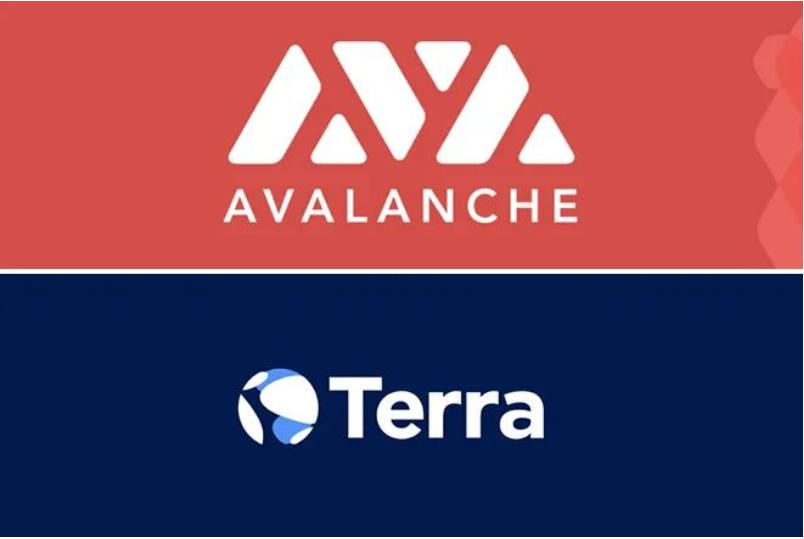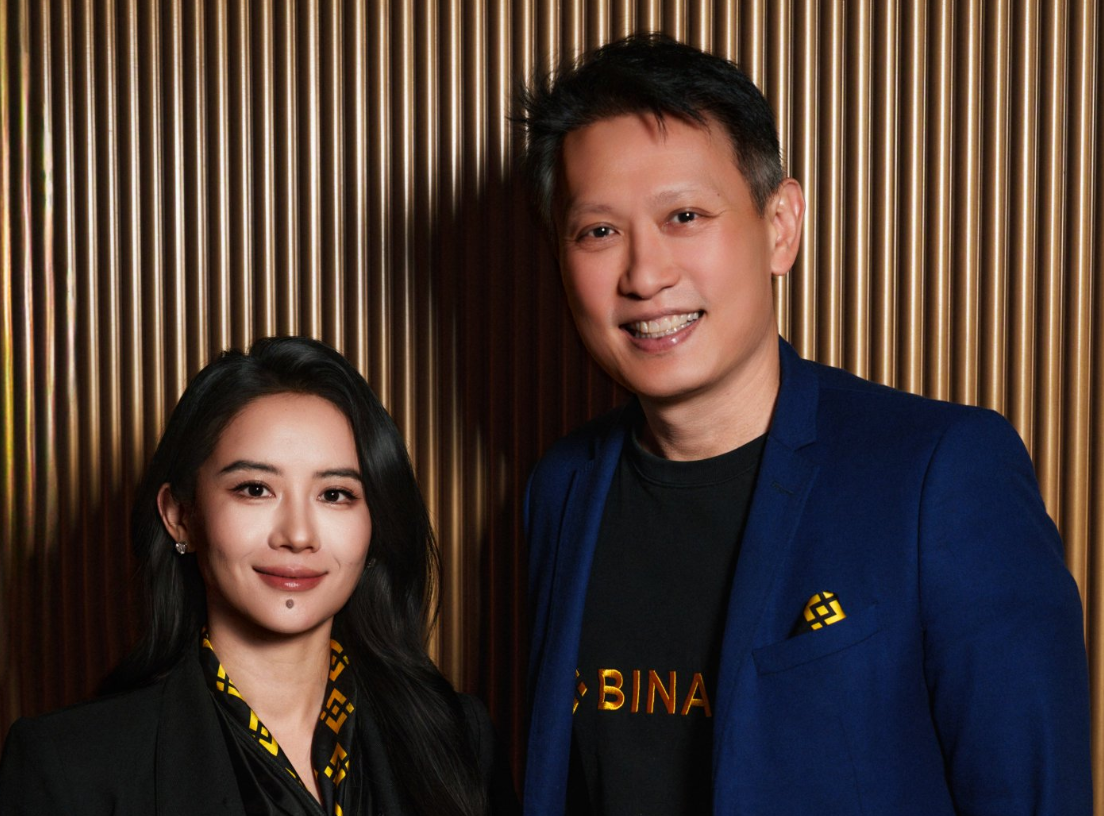Terra与雪崩协议两大创始人对话:平行宇宙的交汇
原文来源:Twitter Space
原文编译:律动BlockBeats
当 Terra 这个庞大的金融帝国开始迅速向外扩张,原生 Stablecoin 的稳定性愈发重要。在宣布引入比特币作为 UST 储备金后,创始人 Do Kwon 在 4 月 8 日宣布 AVAX 也将成为 UST 的储备金,同 LUNA 一样,UST 将支持 Avalanche 链上原生铸造。
去中心化的 Stablecoin,是一场大型实验,UST 的跑通也让其他公链看到了自己算稳的可能性,而 Avalanche 选择直接使用 UST 的确是很多人没有想到的场景。在 4 月 13 日的一场 Twitter Space 中,Terra 创始人 Do Kwon 和 Avalanche 创始人 Emin Gün Sirer 教授同台,跟大家聊了聊两大平行宇宙结合背后的故事。律动 BlockBeats 做了听译,希望能对读者有所帮助。
TL;DR
UST 选择多种储备金是为了建立 Terra 生态之外的信心;
UST 和 Avalanche 是互相选择;
Avalanche 的子网非常有吸引力;
AVAX 与 UST 间的铸造和赎回是不对称的;
如何促进 UST 在 Avalanche 生态与子网中的使用。
主持人:首先我们要开始讨论一下上周末宣布的合作伙伴关系,关于这次合作对 Avalanche 和 Terra 两个生态系统意味着什么。我认为这次合作会将两个社区聚集在一起,以全新的方式进一步推动对区块链技术的采用。这样的合作是整个行业中的第一次,所以很多人都对此感到非常兴奋,大家想更多了解这种合作关系的细节。
希望我们今天能聊到很多很棒的东西,感谢大家的加入。那么,第一个问题是给 Do Kwon 的。在过去的几周里,围绕着购买 BTC 作为 UST 准备金的计划,你接受了很多次采访,谈了许多东西,而现在,你正在致力于 UST 准备金的多元化。
聊聊这个让准备金多样化的决定,以及它将会如何发展吧,然后我们再深入探讨 Avalanche 和 AVAX 将如何融入这个计划。
Do Kwon:好的,这个决定很容易理解,它好比在试着掌握各个国家的语言。在一开始,带来稳定用例就是 Terra 的主要目的之一。这不仅是因为我们最初构建的用例表现出了相当低的波动性,还因为主要用于 Terra 链,然后服务于自己的 DeFi 生态系统。
对于 Terra 生态系统中的用户来说,LUNA 是非常好的抵押品,他们非常相信 LUNA,因为它是 Terra 链的主要质押资产。但从我们的角度来看,我认为 UST 的潜力不仅仅是成为 Terra 生态的 Stablecoin,而是成为横跨所有区块链的去中心化货币,类似于 USDC 和 USDT 在中心化 Stablecoin 领域中所扮演的角色。
Crypto 应该有一种主权货币,这绝对有利于所有生态系统,并且这种主权货币应该由行业领先资产背书。为了做到这一点,将准备金多样化成比特币和 AVAX 这样的资产是很有意义的。比特币能为 UST 提供单一生态资产无法提供的中立性。
因此,随着我们建立了越来越多的比特币储备,不仅 UST 的经济风险降低,而且还意味着在 Terra 之外的生态中使用 UST 的用户们有了更多信心,因为 UST 由一种对于所有生态来说都是中立的资产背书。
这次合作对于 Avalanche 来说同样很有意义,我们有一套关于如何在 Avalanche 上增加 UST 采用率的宏伟计划。UST 的增长,也有助于给 Avalanche 生态的其他部分带来激励。因为 Avalanche 链上的 UST 由 AVAX 背书,所以随着 UST 的增长,AVAX 的供应量也将会减少。
Emin Gün Sirer:我可以补充一下。我认为每个人都十分清楚,我们正在走向一个去中心化的世界,加密货币则处于这条道路的最前沿。在加密货币世界里,我们需要记账单位,我们需要与外部世界相关的价值尺度。
现在,我们把能提供这些的东西称为 Stablecoin。Stablecoin 有许多种,有法币背书的,比如 Tether 的 USDT,Circle 的 USDC 等等。它们在很多方面都很棒,但与此同时,它们也带来了一种独特的风险。它们承担的最大风险,就是没有去中心化,而是有一个由极少数人控制的准备金库。仅仅一张传票,就能让这一整个资产类别全部失去价值。
这确实是有问题的。所以在去中心化的世界里,我们需要一个去中心化的 Stablecoin。刚刚 Do Kwon 所说的正是 UST 为此而生,并提供了一种任何权力都无法控制的计价方式,它是完全、真正去中心化的,所以我们说 UST 是一种适合 Crypto 的稳定币。我认为这是一次很棒的探索,所以当机会和想法出现时,我非常激动,感谢你能联系我。
主持人:两位,你们是如何聊起来的?我相信每个人都想知道这两个生态是如何建立联系的。
Do Kwon:我们一直在找许多不同的方法来进入 Avalanche 生态,并且我们已经取得了一些成功。我们一直在与 Avalanche 生态中的各个团队合作,比如 BENQI、Trader Joe、 Pangolin。我们也在 Avalanche 上启动了一些我们自己的应用,比如 Anchor。当然还有即将启动的应用,比如 Nebula。
我们在 Avalanche 生态中听到的一个一致反馈是,他们想要一个 Stablecoin,由 Avalanche 背书,且至少有两种背书资产,更加中立可信。
因此,增加比特币保证金和 AVAX 保证金的想法和决定,实际上是通过仔细聆听一线反馈而形成的。
这就是我们如何开始了讨论。首先,我们讨论了如何将激励措施与 Avalanche 生态更好地结合起来。然后还有许多问题,比如我们需要与哪些类型的团队交流?我们应该如何与 Avalanche 生态中的人和基金会一起设计储备方案?这就是我们一起完成这件事的方式。
Emin Gün Sirer:Do Kwon,我不知道你是否还记得我们的第一次谈话,我记得非常非常清楚,因为我冻僵了。那是纽约一个非常寒冷的夜晚,我正在和一群朋友一起吃晚餐,我们的时差问题也影响了对话。
我们开始谈话时,我这边是晚上 8:00,而你那边好像是早上 8:00。我不得不走出去打电话,因为很冷,所以我在发抖,下巴都咬紧了。但是我真的很兴奋,因为这将是两个平行宇宙的结合,Terra 宇宙与 Avalanche 宇宙,两种不同的知识、技术融合在一起,创造出真正适合 Crypto 领域的东西。我们努力将拥有的东西整合在一起,创造出比其中任何一部分都更伟大的东西。
主持人:当二位在谈到两个平行宇宙、两种平行生态如何融合在一起时,都谈到了社区的重要性,以及让社区中的所有人都取得成功的重要性。在试着将这两个项目开发者和创始人社区中的大家聚在一起时,你们看到了哪些相似之处,将他们聚在一起可以产生多强大的力量?
Do Kwon:我看到了一个很明显的相似之处:协同效应。在与雪崩生态系统中的项目交流时,我注意到很多热情,还有许多社区驱动的创新。
从某种意义上说,项目愿意互相提供工具和帮助,因为他们希望整个生态系统都能成功。不是因为有直接的金钱利益或者什么激励措施,也不能让你更轻松地筹集资金。即便项目们在某些功能上存在重合的部分,但它们还是在互帮互助,共同提高,而非互相拖后腿。
当发生了这样的事,这个生态的成功就将来临。我们在 Terra 生态中,也看到了拥有相同价值观的建设者们。他们希望每个人都朝着共同的目标努力,而不是互相削弱。在金钱和 VC 热潮席卷 Web3 领域的当下,这是很难得的。
下面谈谈我对 Avalanche 理念的理解,这也是我钟情 Cosmos 的原因之一。每一次牛市,都有人呼吁要控制贫富差距,但是每一次熊市,我们又都忘了它。我把一条区块链视为一座城市,城市周围有绿化带。想要扩容,你只有搬到卫星城,在那里才能建造更多的建筑物。现在任何足够可靠的分布式系统,一个区块的空间都是有限的,就算你在每个区块里都盖上 100 层的摩天大楼,进行垂直扩展,但地面总是会被填满的。而另一种扩展方式,就是像所有现代计算系统一样,水平扩展。
Cosmos 有 SDK,有 IBC 将许多东西连接在一起。而 Avalanche 目前还没有垂直的扩容方案,因为它的共识非常精巧美丽,Avalanche C 链的性能足够出色。Avalanche 目前的扩展方式是为不同的应用搭建子网,进行横向扩展,我已经看到了一些成功案例。DeFi Kingdoms 子网就是一次很好的概念证明,证明了这项技术的可行性。
如果 DeFi Kingdoms 子网在接下来的几个月内运行得很好,那么对于世界各地的发行商和独立开发者来说,这等于是直接告诉他们:Avalanche 是一个高性能链,你可以将其专门用于自己的游戏,而无需与阿猫阿狗、NFT 空投或类似的东西共享有限的区块空间。
所以我认为,Avalanche 扩容并吸引新的十万名 Web3 开发者的愿景,非常有说服力。我们想在 Avalanche 提出的未来中,成为领先的去中心化货币之一。
Emin Gün Sirer:我们很高兴你能加入,Do。接着你的话,我也来谈谈我们的理念。有几件不同的事情共同促成了我们的合作关系。据我所知,这样的合作是 Crypto 领域中前所未有的。促成这次合作最重要的因素之一,就是 Terra 背后的团队了。其实此前,我们已经关注 Do 和他的团队很长时间了。
我们一直在观察他们的迅速崛起,我们知道 Terra 拥有 Crypto 领域中,只有很少一部分项目才拥有的东西,即执行能力、解决难题和交付成果的能力,这是最重要的。不过,当我听说你们基于 Cosmos 的时候,我的心都碎了。我当时非常希望你们能在我们之上工作。在那一刻,我会做任何事情来让你们选择 Avalanche。后来发生的事情实际上相当简单,就是我们非常努力地寻找一个方法,让 Terra 部署并工作在 Avalanche 之上。
能让我们走到一起的第二点,是算法 Stablecoin 的问题。算法 Stablecoin 是一道难题,许多人对它抱有极大的敌意,并且认为这个问题是无解的。曾经有一群人,认为区块链的可扩展性也是无解的,他们质疑 Avalanche,他们说 Avalanche 的机制绝不可能奏效。这样的话现在看起来非常可笑,因为后来现实证明了他们是错误的。都曾饱受质疑,这是 Avalanche 和 Terra 的一个共同点。
其实 Terra 基于不同基础实际上正好能发挥协同作用,因为它的生态是和 Avalanche 不同的。Terra 有一套不同的机制假设,不同的建设者,但在整体的精神上又没有很大不同。Terra 有点像我们的表兄弟,有着相同的价值观,同是家庭的一分子,只是略有不同。
所以,当合作的想法出现后,Ava Labs(Avalanche 开发商)当然想与 Terra 合作了,这会打破现有的格局。我们当时非常非常兴奋,因为我们有能力和机会将两个社区聚集在一起,共同建设新事物,这是从未有过的。当然,我不会再特意重复一遍去中心化 Stablecoin 了,因为这种协同作用能建设出的东西远不止如此。
Do 曾经承诺购买价值 10 亿美元的比特币,他买了。然后他又买了价值 30 亿美元的比特币,还有可能继续买更多的比特币,这也是很令人兴奋的。
所以我们根本不认为这是个一次性的事件,恰恰相反,这只是建立合作伙伴关系的第一步。对于准备金储备,我们提供 AVAX,它具有一些非常类似于比特币的属性,同样有上限,能让你进入充满活力的 DeFi 生态。反过来,我们得到了最大的算法 Stablecoin。所以这种关系是非常棒的,我已经迫不及待地想看到社区聚在一起之后会发生什么了。

主持人:是的,这只是个开始。Do,你能谈谈 AVAX 如何成为 UST 储备的一部分吗?具体如何将 AVAX 放到储备池中换取 UST?这个模型是怎样的?
Do Kwon:模型机制相对比较好理解,你可以把它想象成一个虚拟的 AMM。
在任意时间点上,想要在 Avalanche C 链上获得 UST 的用户都可以将价值 1 美元的 AVAX 交易到这个 AMM 中,获得价值 1 美元的 UST,反之亦然。随着更多 UST 被铸造出来,这个虚拟 AMM 中将含有越来越多的 AVAX。
当你想用你的 UST 兑换 AVAX 时,你可以用你价值 1 美元的 UST 获得价值 99 美分的 AVAX。铸造和赎回之间不对称的原因,是因为我们想确保准备金只在 Stablecoin 下跌的时候被使用。这种不对称性确保人们不能一直用准备金来套利,而只用它来铸造和赎回 Stablecoin。
这个机制有一些性质。第一,如果你尝试使用 UST 和 AVAX,它会在 Avalanche 上创建原生的铸造和赎回机制,这会很方便,因为你不再需要跨链桥,不再需要跨到这个链或那个链来上操作。这能减去好几个步骤,是非常有用的。第二,关于净值,如果雪崩上的 UST 使用率增长,储备池中将有越来越多的 AVAX。从这个角度来看,它有助于将 Stablecoin 的激励机制与托管它的生态结合起来。
Emin Gün Sirer:我要讲讲这对普通人来说真正意味着什么。这允许人们一直拥有 AVAX,如果一个人看好 AVAX,他可以把 AVAX 铸造成 UST,然后在 DeFi 应用中使用 UST,比如在 Anchor 上赚取收益。他们可以把 UST 用于任何目的,就像使用美元一样,可以用它来购买任何他们想要的东西,当然用户必须自己承担其中的风险。对于那些想要探索 DeFi 的人来说,将 AVAX 铸造成 UST,绝对是一个有趣的机会。
Do Kwon:你可以把它想象成一种贸易路线,或者是一个在两个不同国家之间建立的外交渠道。链上项目与国家(nation)有很多相近的属性。这就是为什么他们中的许多人称自己为 dYdX nation、Sushi nation 或 Frog nation 等等。当然这样说有些夸张,但他们之间是有共性的。
所以,对于 Terra 生态系统另一种思考方式是,我们(在去中心化的加密世界中)最大的出口是 Terra Stablecoin,去中心化的货币。打个比方说,如果有美国人想去别的国家卖好莱坞电影,如果那个国家有很多流行明星,那这样生意就会更好做。
主持人:你认为,关于 Stablecoin 的稳定性,还有没有更多的解决方法?Stablecoin 未来可能会脱锚下跌吗?除了比特币之外的另一种资产储备对 Stablecoin 的稳定性有什么帮助?
Do Kwon:好问题。人们总是谈论算法 Stablecoin 的运作机制,却很少有人谈论 Stablecoin 背后的经济能力。如果看看世界各地的中央银行如何运作,你会发现,美元是中央银行制度中最少获得价值支持的货币,至少从机制角度来看是这样。
很直观的一点是,美联储并不维持不同货币的外汇储备,尽管确实有一些,但规模相对较小,因为他们不需要这样做。然而许多较弱的经济体,外汇储备要高得多,只是没有人认为他们的货币很重要,比不上欧元或美元等一些货币,这说明机制并不能完全解决货币的问题。
美元之所以强大,并不是因为在美联储工作的人是最聪明的。(我认为,各个国家行使的货币机制和政策领导人在很大程度上非常相似。)而是因为美国的基础经济更强大。
因此我认为对于 Terra,真正重要的是 Terra 生态当前的健康状况如何、生态上的 App 是否足够去中心化、生态是否在持续成长、Terra UST 如何能在不同的链上实现增长和采用。从这个角度看,对是否需要增加 AVAX 作为 UST 储备资产这个问题,我的观点是,这无论对 Terra 生态还是 UST 储备多样化,都是有很大帮助的。
更重要的是,通过这种伙伴关系,我们可以看到一个雪崩生态系统中增长更快的 UST。合作使两个生态的经济系统更加强大,这就是我们想要实现的目标。
Emin Gün Sirer:是的。我有理由期待这个目标的实现。但 Stablecoin 的故事还在讲述,这还是一个很早期的阶段。你刚才谈到央行,国家发行的 Stablecoin,央行曾放弃在这个领域发挥领导作用的机会。大约一年前,中国意识到区块链的重要性,开始大力研发推动 CBDC。在不久的将来,我认为现有的参与者将成为新兴的参与者,而 UST 目前在这个领域处于领跑地位。
主持人:在最好的情况下,由于这种合作关系,UST 的采用和使用率能以指数级增长,远超任何人想象。
那么 Do,当你考虑与哪个区块链生态合作时,你觉得在 Avalanche 上,你是否想到了一些办法,能进一步促进 UST 跨链带来的采用和使用率增长?比如将 Stablecoin 用来与不同的协议交互、支付,将 Stablecoin 用于不同的交易机制等等。
Do Kwon:我认为第一步是要协调激励措施,确保目标一致,第二步是 Terraform Labs 需要花大力气来研究可以做些什么来帮助发展 Avalanche 生态系统。基本上,我们认为 Avalanche 经济生态系统比其他项目增长得更快。我们确保这种关系更快发展的一种方法是帮助其经济更快增长。
所以,最近我们已经宣布接受 UST 的 Avalanche 项目将成为平台资本品牌计划的一部分。这意味着我们将会对其审计工作进行资助,还会对协议发布初期的启动成本进行资助。这样做的目的是,帮助 Avalanche 项目及生态排除掉一些有缺陷的协议、抵消一些早期的初始成本。
这意味着可以针对更多基于社区的公平启动进行优化,以避免不必要的经济开支。我们正在推进这件事,相信会对 Avalanche 很有帮助。
其次,我们还将为 Avalanche 整合一系列由 Terraform Labs 支持的 app 套件,比如被动资产管理协议 Nebula Protocol。该协议定义了不同区块链的顶级资产集群。而覆盖 Avalanche 生态意味着将会有该生态的一篮子资产,供用户轻松地进行交易,以对 Avalanche 生态进行定向投注。
我认为 Avalanche 生态的应用空间会得到很多关注。而这种锚定形式的收益协议也已经落地。我们正在努力简化用户体验,并为有义务的原生用例提供服务。我们乐于与生态系统中最好的建设者合作,并帮助他们获得更大的成功。
我认为即使你的手上有 USDT 或 USDC,你也应该试着去持有去中心化的 Stablecoin 来对冲各种风险。哪怕现在没有,未来两年或三、五年后可能会用得到。
主持人:说得好。Avalanche 肯定还有很多工作要做,还有很多很好的方法可以将 UST 集成到现有协议或即将启动的新项目中。
Do,当你宣布合作伙伴关系时,你在推文中写道:「Web3 将在多重的链上运行,而其中将包括很多个 Avalanche 子网。」我相信子网将是一项真正即将开花结果的技术。对于子网,你有何见解?
Do Kwon:我对 Avalanche 子网很期待,因为那将使人们可以轻松地启动他们自己的区块空间。当前主流的区块链网络很棒,但人们不得不在这些网络上与别人共享区块空间。这意味着一旦有一些引人注目的事情发生时,比如空投,网络会异常拥挤。对于在该链上运行的其他应用来说,区块空间被这样占用了,是不可接受的。
因为那些游戏通常拥有大量用户,而需要处理的资金量相对较少。不难想象,未来会诞生一些拥有 500 万、1000 万日活跃用户的 Web3 游戏。为了应对这种情况,他们需要自己的专用的区块空间,不能与其他人共享,否则无法保持服务质量。
我刚刚和首尔一家游戏公司的创始人聊过,他们的一款游戏有 100 万日活用户,他向我讲述了网络性能对于一家大型游戏公司的重要性。所以,拥有自己的区块链并有能力对其进行扩展真的很重要。
因为 Avalanche 的性能突出,它的一些子网很有意义。除此之外,就像用户可以自己拥有带宽一样,他们可以自定义共识机制,通过多种不同的方式执行工作,而无需遵守单一的技术堆栈。
Emin Gün Sirer:听到你这么说,我很高兴。作为 Avalanche 的核心成员,我想再补充一点,事实上,让我们走上创造 Avalanche 之路的,是共识协议的突破。我们拥有世界上最快的共识协议,同时也是最去中心化的,它可以将数百万验证者容纳到协议本身中,并且所有这些验证者都在每个决定中发挥作用,对垂直扩展的追求,是驱使我们的动力。
我们引入了子网的概念,以便能够水平扩展。而且我不得不说,在这个领域中最稀有的事情之一就是思路清晰,并有一个正确的思想体系能用来评估分布式系统或经济活动。有很多无用信息和糟糕的体系会将人们带入兔子洞。
如果选择了错误的体系,并最终坚持使用奇怪的技术特点,就会使得网络无法扩展,或者无法诞生出任何有效的东西。我不打算一一列举这些错误的东西,但其中的很多东西大家都很熟悉。比如有些人正在推动完全中心化的项目,他们要么没有办法检测并应对系统上的欺诈行为,要么无法扩展,因为它们最终会与其他链共享相同的硬件或一些关键的瓶颈硬件。
起点很重要,如果第一步错了,后面就会步步错。这就是我们能成功打造 Avalanche,这个世界上最快的区块链的原因。
有你这样的伙伴真是太好了,Do。算法 Stablecoin 是很难实现的,想要拥有一种在各种市场修正中都能保值的货币是极其困难的,这需要实际的成功经验来验证。能有一个成功做到过的合作伙伴真是太棒了。
我之前没有机会插话,我其实想说,我们要做的第一件事就是将 UST 当作钞票,在我们的生态中建设它、使用它,并提高它的使用率。
我们想做的另一件事,是探索我们能在子网中做到什么。正如 Do 提到的,我们可以定制解决方案,我们可以引入许多个百万的新用户。我们可以通过将不同的游戏、不同的子网、不同的用途分隔开的方式来做到这一点。因此,这将是一个令人兴奋的未来。
主持人:是的,未来一定令人期待,我们拭目以待。一些来自推特和其他来源的信息称,Avalanche 可能会出现一个游戏子网。可以聊聊吗?
Do Kwon:我曾经在首尔待过很长一段时间,在首尔有很多大型游戏公司,那世界上游戏公司最集中的地方之一。韩国人是狂热的游戏玩家。我在高中的时候就曾经沉迷于此。鉴于一些研究表明,韩国多达 1/3 的人口持有加密货币或交易加密货币,所以如果将游戏与加密货币领域中出现率非常高的 Web 3 相结合,游戏的吸引力将会提升。这就是为什么全国所有的游戏发行商都在争先恐后地推出 Web 3 游戏。
认为有趣的是,我们一直在与其中一些游戏发行商讨论使用 UST、KRT 或其他不同类型的 Stablecoin 来允许玩家在游戏内进行交易,这将会很有吸引力。因为我们支持多种不同类型的 Stablecoin,并且提供 api 和 sdk 支持多种不同货币的用例。
从游戏开发者的角度来看,这特别有用,因为它解决了两个问题。第一,它允许发行商面向全球用户发布游戏。各个国家的用户认可的 Stablecoin 不尽相同。而我们有一个多 Stablecoin 系统,其中不同的 Stablecoin 与各种不同的事物锚定,这无疑有助于实现这一目标。
第二、如果你在加密领域上发布游戏,这将特别有帮助,因为如果你做传统手机游戏,游戏开发商将会向平台提供商支付一大笔费用。例如,苹果的 iOS 支付。如果游戏开发商在脚本上执行交易,就可避免这种情况。所以现在需要的是提出令人信服的技术结构,让游戏公司可以实际构建这些东西。
我认为如果我们可以让这 Web3 游戏中的一个在雪崩子网上发布,同时使用 UST 和其他 Stablecoin 作为支付和交易的方式,那么在这种情况下,它会是这种伙伴关系最佳体现。如果这种尝试成功,我们便可以复制这种经验,大量提升用例。
Emin Gün Sirer:请允许我打断一下,这很有趣。很早之前我就被可编程游戏迷住了。台下的一些人会记得你以前能使用可编程代码进入 MMORPG 游戏,你可以设计自己的武器并上传自己的代码。但你不能只制造一个杀死所有人的原子弹,你还必须做出一些权衡等等。因此,我们看到的实际上是工作室自己努力打造一款热门游戏,徘徊,然后瘫痪,他们只是制作这些东西。从用户的角度来看,体验不是很好。
你最终会被困在一些游戏中,确保你总是玩得开心。你必须确保不会陷入用户数量较少的情况。这是一种优胜劣汰,由于马太效应,即你必须玩你所有朋友都会玩的游戏,只有少数几个热门游戏会存活。
但随着区块链的出现和上传代码的能力,以及构建可以安全执行代码的虚拟机的能力的提升,而且随着不同风格的游戏的出现,由不同的人编写的不同类型的游戏之间将存在互通的可能。我认为许多游戏其实看起来很相似,但无论如何,如果你在塞尔达的世界,那马里奥的世界将与你无关。
这些正在出现的基因显然是相互兼容的,区块链让你可以在一个宇宙中建造东西并将它们带到另一个宇宙。机会是巨大的。所以目前,我认为我们正在看到第一款游戏的出现。它们具有经济系统,但也许经济系统不是很先进或很复杂,它们最终会遇到你在小国中看到的崩溃和经济问题。
我认为我们将努力克服这些问题,并在游戏本身的经济性中建立更稳定的动态。我们将看到这些具有相同类型的游戏开始在同一链上共享空间,以便将元素从一个游戏转移到另一个游戏。
最重要的是,对于我这个俗气的人来说,我非常期待「我们可以上传和自定义游戏的某些功能」的那一天。所以这只是一个令人兴奋的新兴领域。参与其中的一些演变,这对我们社区中的所有人来说都是一个巨大的机会。
主持人:我认为在接下来的一年左右会发生很多变化:游戏的构建、经济模型的构建,而且我认为 UST 的集成对于这些游戏生态系统来说至关重要。我认为子网是一个完美的地方,所以真的很期待看到 UST 将如何发挥作用。我们正在寻找更多关于如何成长的机会。而且我知道除此之外,你谈到让更多 Terra 生态系统的项目和协议将在 Avalanche 上部署,有哪个特别的项目或平台让你对感到兴奋么?这也是社区最关注的话题,大家都在推特上提问。
Do Kwon:有一些项目正在合作中,但我想谈一些新的东西。众所周知,Terra 是一个巨大的 Web3 生态,我们会有很多创新的用例。比如说,未来也许你可以将你的 NFT 导入到个人资料的图片中,然后互相点赞,一旦你链接到你的钱包,它就会变成一个 3D 头像。然后你可以使用它与 3D 空间中的其他角色进行交互。
当你第一次进入时,它有点像一条街道;当你进入每一座建筑时,你就会进入一个不同的虚拟世界,你还对这些子世界中的每一个环节进行编程。因此开发人员可以将这些建筑中的其中一个创建为小型街机游戏,就像你进入时一样。对吗?或者它可能就像一个商店,你可以在其中浏览不同类型的同质化 Token 或 NFT 商品。Avalanche 将能够支持一整个 NFT 系统,并允许生态中的实例部署。
还有许多有趣的 DeFi 项目,比如 PRISM Protocol,它基本可以将任何有收益的资产拆解铸造成一个结构性 Token,然后按月带来收益;另一方面,如果你想对特定收益率资产的收益率进行定向押注,那么你可以卖出 pToken 并买入更多 yToke,因此你持有了杠杆;如果你只想访问,你也可以卖出 yToken,然后只是在 p 上押注。这些种种都让 DeFi 变得更加理性,因为就像你允许人们对本金的收益率或价格上涨进行定向押注一样。所以我认为这真的很有趣。
主持人:看到这些东西会很令人兴奋。Avalanche 上的生态合作将会带来很多新的创新,你所说的一些游戏内容与 3D 化身的设想真的很有趣,每个人都很期待其中一些事情是如何发展和实现的。接下来我还剩最后一个问题,然后我想我们会花几分钟时间回答听众的一些问题。我们从推特上得到的另一个问题是,现在听起来像是将 AVAX 添加到 UST 的准备金中的初始阶段,那么未来购买更多 AVAX 作为储备的机制是什么?
Do Kwon:根据储备的最终用途,我们正在研究如何发展准备金的流程。当前我们处于规范制定的后期阶段,当前规范的初始类型可以在我们的开发者论坛上找到,我们已在社区已经公布了当前的机制,其中包括如何铸造 UST 和赎回 AVAX。我鼓励大家都去看看。对于铸造说明,BTC 和 AVAX 都有一份规格文件,我认为很有趣。
与此同时,我们将购买的 AVAX 放入流动资金池中,由于它目前还不是全抵押的储备机制,因此其中仍将有流动性,我们将针对流动性进行深度测试。但我认为这将是一个循序渐进的过程。我认为在几个月后,我们将启动并运行储备机制,以便用户可以使用它。
主持人:感谢你的解答,如果大伙有机会去阅读那篇规范文件,将会看到这种机制是如何构建的。接下来我们有几分钟的时间来回答听众的几个问题,我敢肯定每个人对这两个项目都有很多不同的问题。我们希望将重点放在正在构建的机制中的这种特殊的伙伴关系上。第一个,约瑟夫,你好。
第一位嘉宾:嘿,谢谢你让我参加。我打算向你们询问一些关于 Avalanche 子网的一些问题。具体而言,UST 是一个非常独特、有趣的系统,Stablecoin 是有趣的价值支柱,甚至可以为整个城市政府建立经济结构和支付结构。
我想知道,Avalanche 子网是否能够集成地方行政的交易系统,以便他们可以为自己的当地货币创建自己的子网,转移和支付等等。
Emin Gün Sirer:这是一个很好的问题。我在纽约州的伊萨卡住了很多年。那些熟悉当地货币的人可能听说过伊萨卡时(Ithaca HOUR),那是一种地方货币。当我在伊萨卡呆着的时候,我可以用伊萨卡时向我的园丁付费,然后他或她同样可以要求你花一个小时帮助他们的搞定他们的笔记本电脑或其他任何东西。是的,当地货币真是太棒了,甚至可以为社区创造奇迹。我有很多关于伊萨卡时早期治理的有趣故事,但我不会长篇大论。
我要说的是,我们所建立的任何新金融链路都不是独立的,任何人提出的任何新平台的核心任务都绝对重要,不仅仅是丰富它所构建的一个 Token,而是为其他人创建一个创建数字资产的平台。这就是我们在 Avalanche 中建立的,也是我们的标语。网络把所有的东西都数字化了,我认为随之而来的事情是让每个人都有能力自己创建自己的数字资产。
我们当然与各种对当地货币感到兴奋的人交谈过,并与一些地方就发行自己的 Token 进行了交谈,世界各地都有。不过我可以这么说,还有很多监管不确定性,最终发生的事情往往是迫使地方行政系统考虑使用法定货币,压力来自官方上的分歧,上层与基层的考虑是不一样的。
而且由于存在这种紧张关系,因此监管问题非常现实,如果你要是在任何国家的一些小型司法管辖区取得成功,你可能会与中央发生冲突。中央有权且有能力将你的网络关闭。
所以这是一个非常吸引人的领域,我个人觉得非常非常有趣,符合我的价值观,即建造为人们服务的东西、建造反文化的东西。但与此同时,也陷入了困境,我很高兴能做点什么。正如您在问题中指出的那样,子网具有优秀的基础设施。
它们允许你拥有一组独立的验证者,除了需要与 Avalanche 网络连接以便与他人和工具一起操作之外,无论你有什么规则,它们都不会强迫你做出技术上的决定。所以这是一个相当轻量的设计,如果人们有想法,我会全神贯注,整个实验室团队都愿意提供帮助。
第二位嘉宾:我有一个问题,我想知道 Terra 选择 Avalanche 背后的决策过程,为什么不是其他 Layer1?
Do Kwon:Avalanche 是许多链,而不是一个链。哈哈,开个玩笑。但是基本上,我想我已经在前面解释了这个问题。
仅从目前活跃于 Avalanche 的建设者的共同团结来看,我不认为有任何理由可以否认今天发展最快的公链就是 Avalanche。我认为随着一些更高效能的 Dapp 开始上链,这一趋势会更加明显。我认为子网提供了一个难以置信的机会,能够以不必与其他应用程序共享区块空间的方式满足这些需求。人们喜欢定制构建自己的服务和基础设施,而不受到性能的他人的限制。
第三位嘉宾:还是关于子网的一些问题,你是否想过将 UST 作为 Avalanche 子网的 Gas 费用?或者更近一步,为 Luna 提供 虚拟机?是否有计划拥有稳定的 Gas Token?
Emin Gün Sirer:好问题。这是我们需要深思熟虑的事情,我们已经为不同的虚拟机提供了一些示例代码。
我们现在有很多定制化的虚拟机,甚至比 EVM 速度更快。我不确定我们是否推出过关于 Gas 的虚拟机,但更直接的东西是:人们想想要用自己的 Token 作为 Gas,我们有一些相关的示例代码,已经公开的,还即将公开的。
如果你愿意,也可以编写相同的示例代码,并在社区提案。Stablecoin 非常适合 Gas,它消除了不确定性和价值的反身性,一切都会变得更加可预测,所以我很想看到这样的子网蓬勃发展。



